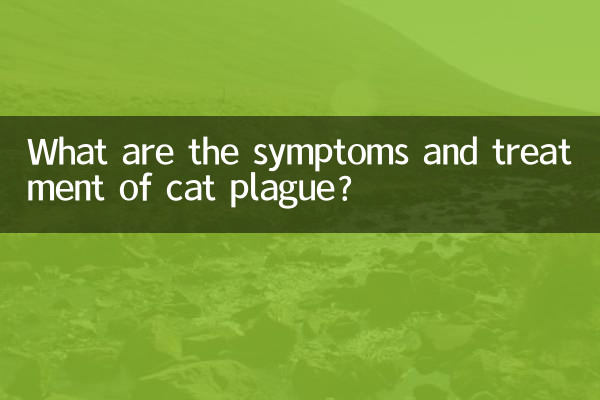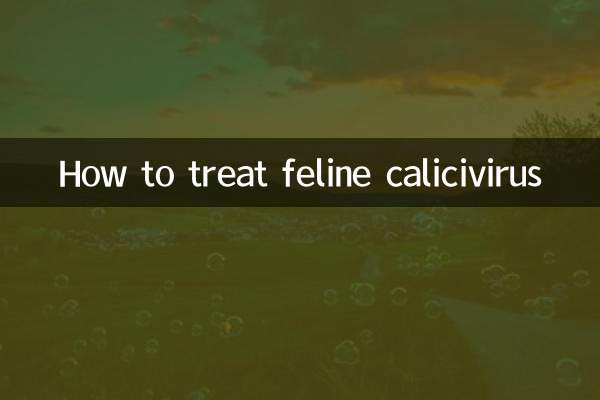What are the symptoms and treatment of cat plague?
Feline distemper, also known as feline panleukopenia, is a highly contagious disease caused by feline parvovirus (FPV), which is a great threat to young cats and unvaccinated cats. The following is a compilation of cat plague-related content that has been hotly discussed on the Internet in the past 10 days, including symptoms, treatment methods and preventive measures.
1. Common symptoms of cat plague

| Symptom classification | Specific performance | Emergence stage |
|---|---|---|
| gastrointestinal symptoms | Vomiting (yellow-green liquid), diarrhea (bloody), loss of appetite | 1-3 days after onset of illness |
| systemic symptoms | High fever (above 40℃), depression, dehydration | Early stage of onset |
| Abnormal blood tests | The number of white blood cells drops sharply (<2000/μl) | Middle and late stages of disease |
| neurological symptoms | Ataxia and convulsions (common in young cats) | Severe stage |
2. Treatment plan for cat plague
| Treatment direction | Specific measures | Things to note |
|---|---|---|
| Symptomatic treatment | Antiemetic (maropitant), antidiarrheal (montmorillonite powder), rehydration (lactated Ringer's solution) | Dosage needs to be calculated strictly based on body weight |
| antiviral treatment | Cat plague monoclonal antibody (2ml/kg), interferon (1MU/kg) | Best results within 48 hours of onset of symptoms |
| supportive care | Blood transfusion treatment (for cats with anemia), nutritional support (nasogastric tube) | Need to match the donor cat’s blood type |
| Environmental disinfection | Use a 1:32 dilution of bleach or a specialized disinfectant | Viruses can survive in the environment for up to 1 year |
3. Hot topics of discussion about cat plague
1.Cure rate controversy: Recent data from pet forums show that the cure rate of vaccinated adult cats is 70%, while that of unvaccinated kittens is only 30-40%.
2.New treatments to try: Some veterinarians have shared cases of using oseltamivir (anti-influenza drug), but the academic community has not yet reached a consensus.
3.Home Care Essentials: Maintaining the body temperature of sick cats (using electric blankets) and force-feeding (feeding liquid food through a syringe) have become hotly discussed techniques.
4. Key data on preventive measures
| preventive measures | efficient | Implementation recommendations |
|---|---|---|
| core vaccinations | >95% | Kittens are first vaccinated when they are 8 weeks old, and boosted every 3-4 weeks until they are 16 weeks old. |
| Quarantine new cat | Reduce the risk of infection by 80% | Newly arrived cats need to be isolated for 2 weeks |
| Lactation protection | The protective period of maternal antibodies is 6-8 weeks | Breastfed kittens need to be vaccinated after 6 weeks |
5. Special precautions
1.false positive problem: Many recent cases have shown that rapid tests may produce false positives within 7 days after vaccine injection, and PCR is recommended for confirmation.
2.human-cat transmission: Although it does not infect humans, the virus can be spread through clothing. After contact with a sick cat, you need to change your clothes before contacting a healthy cat.
3.Recovery period management: The cured cat is still detoxifying for 6 weeks and needs to be continuously isolated and strengthened nutritional supplements (taurine and vitamin B complex are recommended).
If suspected symptoms are found, it is recommended to seek medical treatment immediately and disinfect the environment. Early treatment can significantly improve survival rates. Prevention is always better than cure!

check the details

check the details